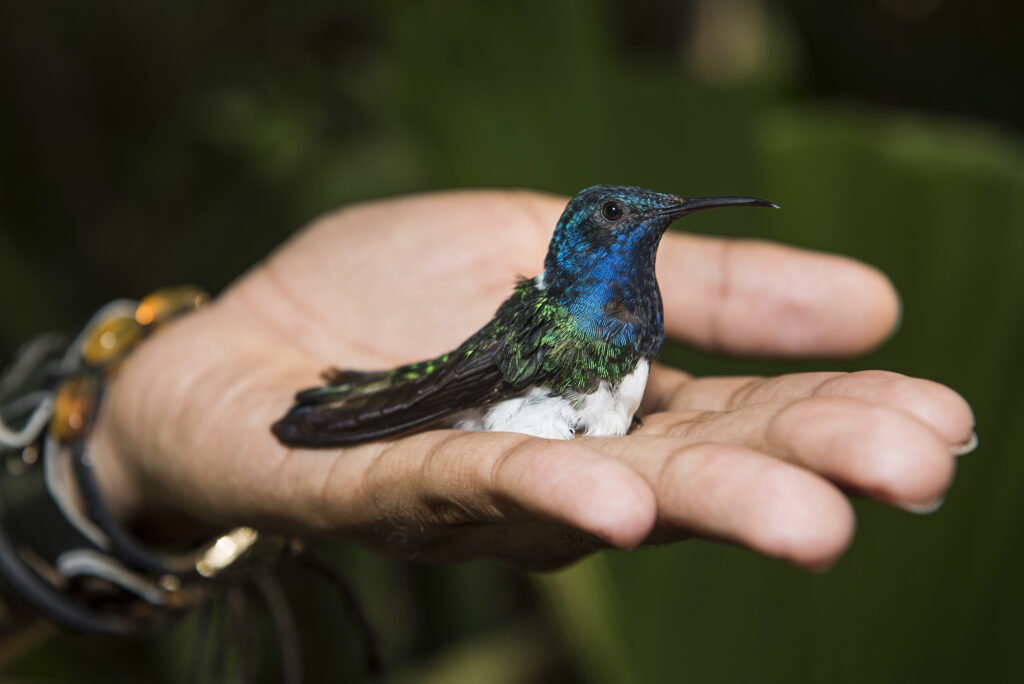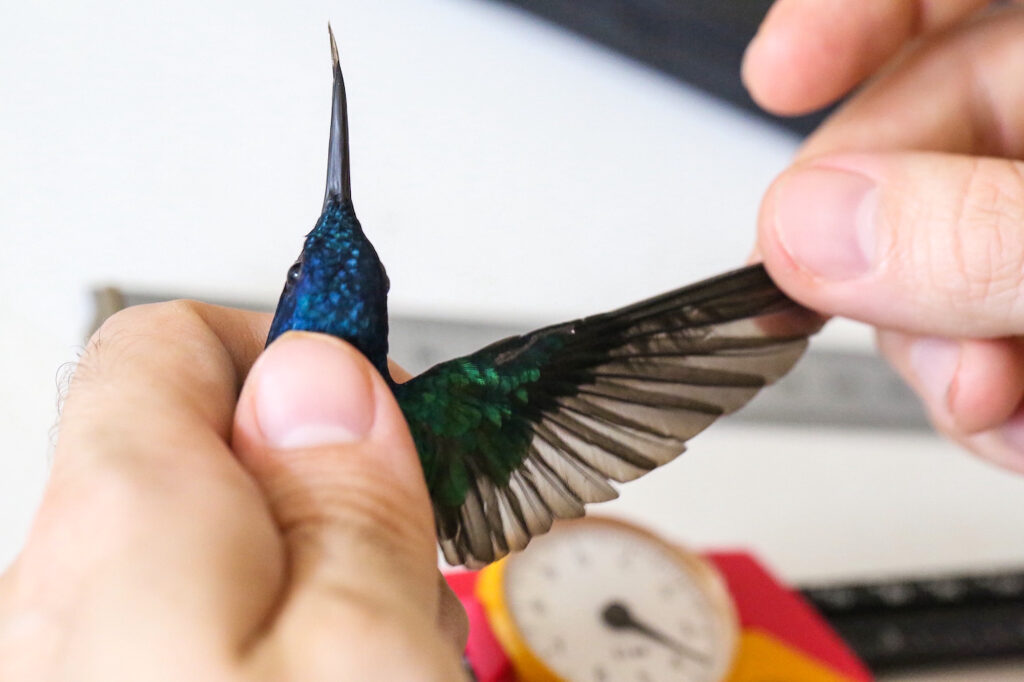Female Hummingbirds Can Disguise Themselves As Males In Order To Avoid Being S3xually Harassed
Researchers studying the changes in the colour of hummingbird plumage have found that some females change their colours to appear more masculine allowing them to slip under the radar of aggressive males and go about their lives in peace.
In a study, led by Doctor Jay Falk at the Cornell Lab of Ornithology, researchers found that some female hummingbirds change their plumage to appear more male in order to avoid harassment and bullying especially when they are trying to feed.
Male hummingbirds tend to have ‘flashier’ feathers, and by adopting a similar look female’s are able to reduce the amount of attention they get from males, making it easier for them to feed without being harassed.

Falk said: “What’s interesting about the White-necked Jacobin is that all the juveniles start out with male-like plumage,”
He added: “Among most other bird species, juvenile plumage looks more like the female’s, presumably to be less obvious to predators.”
Male white-necked Jacobin hummingbirds tend to be very brightly coloured with flashy feathers whilst females are typically much less interesting to look at with their grey, black and dark green colouring which helps them blend into their habitat.

The research team studied white-necked Jacobin hummingbirds (Florisuga mellivora) in Panama and found that 20 per cent of female birds do not shed their male feathers like other birds and keep them into adulthood.
Falk said: “If females having male-like plumage is the result of sexual selection, then the males would have been drawn to the male-plumaged females,”
He added: “That didn’t happen. The male White-necked Jacobins still showed a clear preference for the typically plumed adult females.”

Falk and his assistants tagged the birds with ID tags and studied their interaction around 28 different bird feeders and then measured how much time they spent feeding.
Falk said: “Our tests found that the typical, less colourful females were harassed much more than females with male-like plumage,”
He added: “Because the male-plumaged females experienced less aggression, they were able to feed more often—a clear advantage.”

The study revealed that females who had male-like plumage were able to feed 35 per cent longer than the more typical coloured females. As hummingbirds have one of the highest metabolic rates of any vertebrate this extra time feeding makes a huge difference to their survival chances.
The study concluded that female White-necked Jacobins retain the male-like plumage of their youth to avoid harassment from males by looking more like them. Currently, it is not clear what physical mechanism allows some female birds to alter their plumage.
Falk added that studies have found that 25 per cent of the world’s 350+ hummingbird species also have some females that look like males meaning it is not unique to the white-necked Jacobin.

The study, led by Doctor Jay Falk at the Cornell Lab of Ornithology, titled ‘Male-like ornamentation in female hummingbirds results from social harassment rather than sexual selection was published in Current Biology yesterday (26th August).



